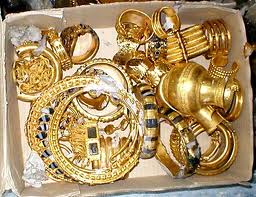1. IRAQ's Modern History
The Arab Majority and The Minorities
By Aseel Nasir Dyck
The policy of "Divide and Rule" is unfortunately alive and well and has been used by all imperialists down the ages. The British used it well in Iraq and played off tribe against tribe, Arab against Kurd, Sunnis against Shiites, farmers against landowners and merchants, and so on. We rarely hear nowadays that Iraq is predominately an Arab country with ethnic and religious minorities, which is the case in most countries in the world in that there tends to be a majority ethnic group and a minority of other diverse communities. We have to thank such quislings like Kenan Makiyya, a shameless Iraqi who encourages the U.S. occupiers of Iraq to institute a new state with no mention of "Arab" in it! He wants to "de-Arabize" the new Iraq.
Historically the Christians of Iraq were primarily Syriac-speaking and the majority was referred to in Church history as the Nestorians. Nestorius was a bishop of Antioch who was elected as Patriarch of Constantinople in the 5th century A.D. At one of the Ecumenical Councils of early Christianity where Christian doctrines were being codified, Nestorius refused to accept the doctrine that the Virgin Mary was the Mother of God. He was condemned by the Council and exiled to Petra where he died. His followers were called Nestorians, although they themselves refused that appellation because it carried with it the stigma of heresy. Indeed, they referred to themselves as "The East Syrian Church". They have a noble and important role in the Abbasid state in culture and science.
The Arab Majority and The Minorities
By Aseel Nasir Dyck
The policy of "Divide and Rule" is unfortunately alive and well and has been used by all imperialists down the ages. The British used it well in Iraq and played off tribe against tribe, Arab against Kurd, Sunnis against Shiites, farmers against landowners and merchants, and so on. We rarely hear nowadays that Iraq is predominately an Arab country with ethnic and religious minorities, which is the case in most countries in the world in that there tends to be a majority ethnic group and a minority of other diverse communities. We have to thank such quislings like Kenan Makiyya, a shameless Iraqi who encourages the U.S. occupiers of Iraq to institute a new state with no mention of "Arab" in it! He wants to "de-Arabize" the new Iraq.
Historically the Christians of Iraq were primarily Syriac-speaking and the majority was referred to in Church history as the Nestorians. Nestorius was a bishop of Antioch who was elected as Patriarch of Constantinople in the 5th century A.D. At one of the Ecumenical Councils of early Christianity where Christian doctrines were being codified, Nestorius refused to accept the doctrine that the Virgin Mary was the Mother of God. He was condemned by the Council and exiled to Petra where he died. His followers were called Nestorians, although they themselves refused that appellation because it carried with it the stigma of heresy. Indeed, they referred to themselves as "The East Syrian Church". They have a noble and important role in the Abbasid state in culture and science.
As for the terms "Assyrians" and "Chaldaeans," which are used to describe non-Arab Christians (other than Armenians), there is absolutely no historical reference of their association with the Assyrians and Chaldaeans of ancient Mesopotamia. The first reference to such an association began in the 19th century when British Protestant missionaries tried to gain religious influence as part of the general rivalry of Protestant and Catholic missionaries in the area. Previously, the Catholic missionaries in the Middle East as a whole, including Iraq, had succeeded in the 16th century A.D. in converting some of the Orthodox churches' membership to the Catholic Church. These Uniate communities ---in union with Rome--- were the Greek Orthodox, Syrian Orthodox, Armenian Orthodox, Coptic Orthodox and the independent Nestorians/Assyrians. In exchange for recognizing the Pope in Rome as leader of the Church, they were able to maintain their ancient apostolic liturgies, rites, and customs such as the marriage of priests. Now when British travelers and Protestant missionaries such as Layard, Badger, Wingate and others passed through what is now modern Iraq on their overland route to India and discovered the existence of the East Syrian Church members or Nestorians, they praised them as "the first Protestants". They named the original Nestorians --Assyrians-- and named the majority Catholic or Uniate Nestorians -- Chaldaeans. This is the earliest reference to them by these terms. In Iraq's modern history, those who became known as Chaldaeans tend to use Arabic and identify with Arabs. However, the indigenous Assyrians from Turkey and Iran who were settled in Iraq by the British during World War I wanted to have temporal (political) as well as religious authority as in the old "millet" system of the now defunct Ottoman Empire. Moreover, their leadership did not want to be part of Iraq under King Faisal I, but rather have an independent state of their own carved from Iraq. Such a crisis arouses in Iraq in the 1930s and led to a bloody fight between armed Assyrians and the Iraqi army headed by the Kurd Bakr Sidqi. This is another story Kenan Makiyya chose to twist and distort in his writings. He needs a history lesson---since that is not his field!
(*_*)********(*_*)
